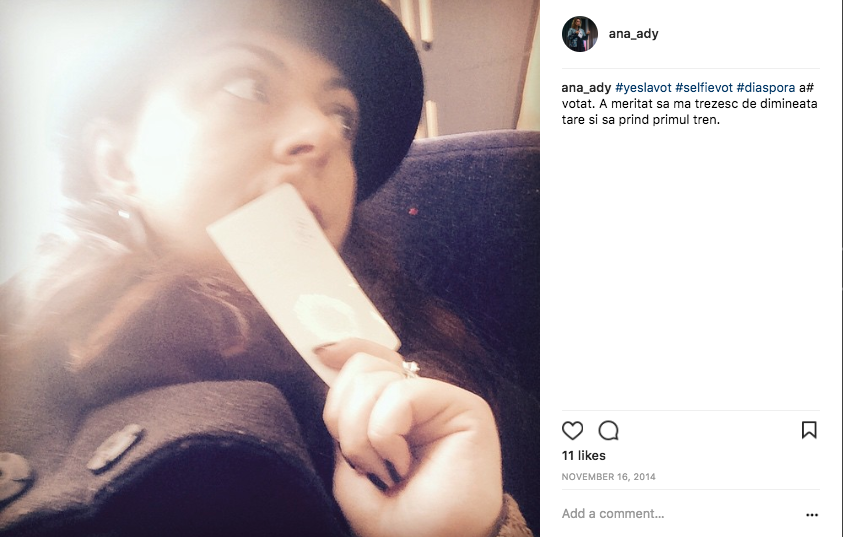#yeslavot is finally out. Our article (co-authored with Roman Gerodimos and Darren Lilleker, both from Bournemouth University) is finally out in Javnost – The Public. This is based on Instagram data we collected in 2014 during the second round of the Romanian Presidential elections and is, perhaps, the first Instagram study looking at political communication, citizen/voter engagement and diaspora.
The study’s conclusions predicted what Darren and I have later recorded in our edited volume focusing on the #rezist protests of 2017 (although, I know, our volume came out before the paper)
“the ways in which the online and the offline intermingled on Instagram seem particularly interesting. Physical co-presence (e.g. queues in polling stations, crowds in public space) appears key to the construction of the movement, even if largely online. Instagram provided the space in which a virtual, transnational community could form and grow. It also allowed those who could not be present to join this “me too†collective by posting photos of their TV and computer screens. That element perhaps reveals the true character of this event as an historic moment that was affectively experienced by networked citizens.”
The full citation:
Adi, A., Gerodimos, R., & Lilleker, D. (2018). ‘Yes We Vote’: Civic mobilisation and impulsive engagement on Instagram. Javnost-The Public, 25(3), 1-18. DOI: 10.1080/13183222.2018.1464706
The full abstract is below:
Social media have become increasingly central to civic mobilisation and protest movements around the world. Emotions, symbols, self-presentation and visual communication are emerging as key components of networked individualism and connective action by affective publics challenging established political norms. These emerging repertoires have the potential to reignite civic engagement, although their coherence and sustainability have been questioned. We explore these phenomena through an examination of Instagram use during the 2014 Romanian presidential election. Voting irregularities during the 1st round, particularly affecting the diaspora, gave rise to an impulsive civic movement utilising social media to express solidarity and drive turnout in the 2nd round. Using an original coding framework, we look at how narratives of identity, community and engagement were visually constructed by users on Instagram; the activities, settings, spaces, objects and emotions that comprised this multi-authored story. Our analysis reveals the creation of a loose “me too†collective: an emotionally charged hybrid of self-presentation and participation in a shared moment of historic significance, which otherwise lacked particular norms, political agendas or hierarchies. The civic movement on Instagram materialised primarily through photos documenting the act of voting; an imagined community that combined co-presence in physical space with virtual solidarity through photos of ballots, flags and landmarks. The platform appears to favour impulsive, symbolic and affective expression rather than rational or critical dialogue. As in other cases of post-systemic grassroots engagement, individuals came together for a short period of time and expressed the need for change, although this remained largely an abstract signifier.
